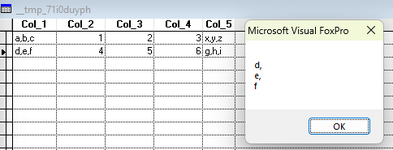DELIMITED is for files that contain data with delimiters and separators. There's a lot of confusion about those two, particularly since the command itself mixes them up. Delimiters are characters that surround the data in a field. For example, the word "snazzlefritz" is delimited by quote marks in this sentence. Separators come between two data items. For example, the following list of colors uses commas as separators: "chartreuse, lavender, fuchsia, taupe, teal." A delimited file normally contains both delimiters and separators. Here's an example (generated from the Labels.DBF that comes with VFP):
"DATAW","LABELLYT","Avery 4143",F,4869,/ /
"DATAW","LABELLYT","Avery 4144",F,39266,/ /
"DATAW","LABELLYT","Avery 4145",F,24620,/ /
"DATAW","LABELLYT","Avery 4146",F,32961,/ /
Each character field is surrounded by quotes (the delimiters), and fields are separated by commas. This is the default format for a delimited file.
TYPE DELIMITED can handle several other options. DELIMITED WITH BLANK and DELIMITED WITH TAB use quotes for delimiters, and fields are separated by spaces or tabs. DELIMITED WITH DELIMITER lets you specify the delimiter—fields are separated by commas.
VFP 5 introduced the DELIMITED WITH CHARACTER clause that lets you specify the separator. So DELIMITED WITH CHARACTER ! means that there's an exclamation point between each pair of fields. We can't see why they couldn't have improved the situation here by giving this option a useful name like SEPARATED BY. Nonetheless, we're very grateful to have this option because it increases the number of files we can handle without having to break out the low-level file functions.
You can combine DELIMITED WITH and DELIMITED WITH CHARACTER to specify both the delimiter and the separator.
TYPE CSV ("comma-separated values") is like DELIMITED, except VFP assumes the first line in the file contains field names, so it skips that line.
On the whole, the choices are quite a mess. If you're still confused by this, we suggest you do what we did to figure all this out. Try COPY TO with each option on a small data sample.

